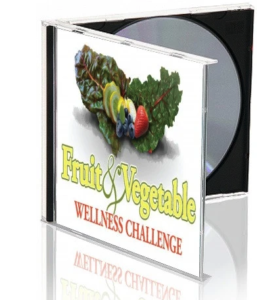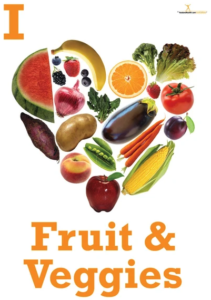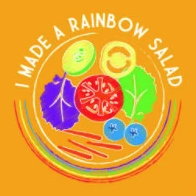Eating in Color: Yellow
How are you liking the Eating in Color series so far?Just in case you've missed the beginning, we're exploring the health impact of delicious fruits and vegetables, then digging into how to prepare these foods. And the whole series is organized by color!At this point, we've tackled red, with a spotlight on strawberries and red bell peppers, and orange, which featured oranges and carrots. Today we continue with... yellow!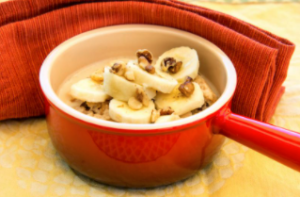 Let's begin with the health impact of yellow fruits and vegetables. These foods are generally high in fiber, potassium, and vitamin C, just like many other fruits and vegetables. They're also great sources of riboflavin and other B vitamins, along with the mineral manganese!Why is that important? It's all about what B vitamins can do for you. "B vitamins are important for making sure the body’s cells are functioning properly. They help the body convert food into energy (metabolism), create new blood cells, and maintain healthy skin cells, brain cells, and other body tissues." Riboflavin in particular is vital for energy production and processing other B vitamins so that we can use them effectively.Now manganese is very useful for energy production as well. Plus, "your body uses manganese to [...] protect your cells from damage. [It] also needs manganese for strong bones, reproduction, blood clotting, and a healthy immune system." A single banana has 14% of the daily value (DV) for manganese -- it's a great source of this vital mineral.And speaking of bananas, they're the yellow fruit we're featuring today! Like many other yellow fruits, bananas are rich in fiber, potassium, vitamin C, manganese, and riboflavin, and they're also good sources of vitamin B6, copper, and magnesium. They're even full of catechins and other antioxidants, all of which are great for your health.
Let's begin with the health impact of yellow fruits and vegetables. These foods are generally high in fiber, potassium, and vitamin C, just like many other fruits and vegetables. They're also great sources of riboflavin and other B vitamins, along with the mineral manganese!Why is that important? It's all about what B vitamins can do for you. "B vitamins are important for making sure the body’s cells are functioning properly. They help the body convert food into energy (metabolism), create new blood cells, and maintain healthy skin cells, brain cells, and other body tissues." Riboflavin in particular is vital for energy production and processing other B vitamins so that we can use them effectively.Now manganese is very useful for energy production as well. Plus, "your body uses manganese to [...] protect your cells from damage. [It] also needs manganese for strong bones, reproduction, blood clotting, and a healthy immune system." A single banana has 14% of the daily value (DV) for manganese -- it's a great source of this vital mineral.And speaking of bananas, they're the yellow fruit we're featuring today! Like many other yellow fruits, bananas are rich in fiber, potassium, vitamin C, manganese, and riboflavin, and they're also good sources of vitamin B6, copper, and magnesium. They're even full of catechins and other antioxidants, all of which are great for your health.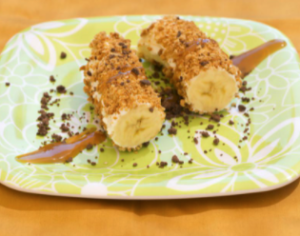 Bananas are inexpensive, widely-available, and pretty easy to store. They're a great introductory fruit! I like to bring one along as a handy snack if I've got a day of in-person meetings or errands -- they come with their own wrappers, so packing them along is a breeze.When you're shopping, it's usually a good idea to pick slightly under-ripe bananas with a little green tinge to them. Then they can ripen fully at home on a banana hook or in your fruit bowl. Of course, if you want to eat your bananas right away, pick older specimens with brown instead of green markings. Just steer clear of large brown spots or dents, which could bruise the fruit inside the peel.
Bananas are inexpensive, widely-available, and pretty easy to store. They're a great introductory fruit! I like to bring one along as a handy snack if I've got a day of in-person meetings or errands -- they come with their own wrappers, so packing them along is a breeze.When you're shopping, it's usually a good idea to pick slightly under-ripe bananas with a little green tinge to them. Then they can ripen fully at home on a banana hook or in your fruit bowl. Of course, if you want to eat your bananas right away, pick older specimens with brown instead of green markings. Just steer clear of large brown spots or dents, which could bruise the fruit inside the peel.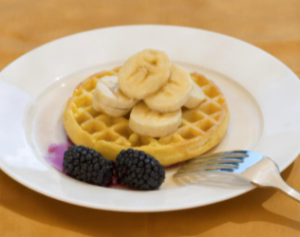 Remember, bananas should be stored at room temperature, not in the fridge. They're usually good for a week or two. If the texture/appearance of a banana is not as vital (like if you're using them for smoothies or banana "ice cream" or something similar) you can also store peeled and sliced bananas in a sealed bag in the freezer -- that'll extend their shelf lives significantly. Oh oh! If you forget about your bananas and they turn brown before you can eat them, you don't need to throw them out! Use them to make banana bread instead!Of course, there are lots of other delicious ways to cook with bananas. Here are a few of the most popular banana recipes from our recipe archive...
Remember, bananas should be stored at room temperature, not in the fridge. They're usually good for a week or two. If the texture/appearance of a banana is not as vital (like if you're using them for smoothies or banana "ice cream" or something similar) you can also store peeled and sliced bananas in a sealed bag in the freezer -- that'll extend their shelf lives significantly. Oh oh! If you forget about your bananas and they turn brown before you can eat them, you don't need to throw them out! Use them to make banana bread instead!Of course, there are lots of other delicious ways to cook with bananas. Here are a few of the most popular banana recipes from our recipe archive...
- Banana Nut Oatmeal
- Banana Orange Muffins
- Peanut Butter Banana Sandwich
- Banana Berry Dream
- Banana Split
 And bananas are far from the only yellow fruit! There are lots more to explore, including...
And bananas are far from the only yellow fruit! There are lots more to explore, including...
- Lemons
- Pineapples
- Mangoes
- Peaches/Nectarines
- Starfruit
Our yellow series will continue later this week with one of my favorite yellow vegetables: corn!In the meantime, check out these wonderful fruit and vegetable resources from the Nutrition Education Store...